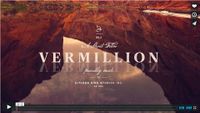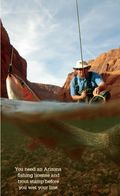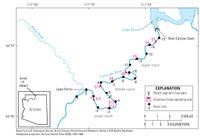|
|
| Line 12: |
Line 12: |
| | <tr style='mso-yfti-irow:0;mso-yfti-firstrow:yes'> | | <tr style='mso-yfti-irow:0;mso-yfti-firstrow:yes'> |
| | <td width=40% valign=bottom align=left style='width:2.05in;padding:0in 5.4pt 0in 5.4pt'> | | <td width=40% valign=bottom align=left style='width:2.05in;padding:0in 5.4pt 0in 5.4pt'> |
| − | <p class=MsoNormal>[[Image:Humpback-large- PIC.jpg|thumb|left|250px]][[Image:GRAPH- Fish and Invertabrate assemblige.jpg|thumb]]</p> | + | <p class=MsoNormal></p> |
| | </td> | | </td> |
| | </tr> | | </tr> |
| Line 21: |
Line 21: |
| | ------------Portal list on righthand side----------> | | ------------Portal list on righthand side----------> |
| | |style="width:60%; font-size:95%;"| | | |style="width:60%; font-size:95%;"| |
| − | '''Description'''
| |
| | | | |
| − | The Colorado River running through Grand Canyon once hosted one of the most distinctive fish assemblages in North America. The wild Colorado River presented fish with a challenging and variable aquatic habitat: very large spring floods, near-freezing winter temperatures, warm summer temperatures, and a heavy silt load.
| + | [[Image:Vermillion Video- Fishing.jpg|thumb|200px]]<br>'''[http://vimeo.com/76818138 Vermillion: Highlights the passion the fishing community has for the Glen Canyon fishery and their love of not only the fishing experience but for the TOTAL experience. VIDEO LINK]''' |
| − | | + | ---- |
| − | Note that only eight fish species were native to Grand Canyon. Of the eight species, six are endemic, meaning that they are only found in the Colorado River basin. (NPS) [[File:Additions and Remaining Native Fishes Slide 9.jpg |thumb]]
| + | Definition of '''Blue Ribbon''' fishery: [http://en.m.wikipedia.org/wiki/Blue_Ribbon_fisheries Definition LINK] |
| | | | |
| | | | |
| Line 33: |
Line 32: |
| | ----------Strapline immediately below banner----------> | | ----------Strapline immediately below banner----------> |
| | {| style="width:100%; height:50px" border=1px solid #ccc; background:#cedff2 | | {| style="width:100%; height:50px" border=1px solid #ccc; background:#cedff2 |
| − | ! style="width=33%; background:#cedff2;" | [[Table- Fish Species of the CR- GLEN and Grand| Fish Species of the Colorado River in Lower Glen Canyon and Grand Canyon]]<br>(See Fish Table) | + | ! style="width=33%; background:#cedff2;" | [[Trout in Lower Glen Canyon and Grand Canyon]]<br>(See Fish Table) |
| | ! style="width=33%; background:#cedff2;" | [[TBD|TBD]] <br>(TBD)<br> | | ! style="width=33%; background:#cedff2;" | [[TBD|TBD]] <br>(TBD)<br> |
| | | | |
| Line 44: |
Line 43: |
| | ! <h2 style="margin:0; background:#cedff2; font-size:120%; font-weight:bold; border:1px solid #a3bfb1; text-align:left; color:#000; padding:0.2em 0.4em;">GROUP MEMBERS</h2> | | ! <h2 style="margin:0; background:#cedff2; font-size:120%; font-weight:bold; border:1px solid #a3bfb1; text-align:left; color:#000; padding:0.2em 0.4em;">GROUP MEMBERS</h2> |
| | No Ad-Hoc Group currently assigned | | No Ad-Hoc Group currently assigned |
| − | *[[Media:141029 USFWS HBC Downlsting.pdf |141029 USFWS HBC Down listing -Topic]]
| |
| | | | |
| | |- | | |- |
| Line 54: |
Line 52: |
| | |style="color:#000;"| | | |style="color:#000;"| |
| | | | |
| − | *[http://azdailysun.com/news/local/razorback-sucker-turns-up-in-grand-canyon-after-years/article_c394491f-3afa-5ff7-870d-a5aa5cdb90c1.html?comment_form=true AZ Daily News_ Razorback Sucker turns up in Grand Canyon after 20 years]
| + | [[2015 News about the declining fish status at Fishery|2015 News about the declining fish status at Fishery]] |
| − | **The last one recorded had been caught in 1990.
| + | |
| − | **Caught October 9th, lower part of Grand Canyon believed to have traveled upstream some 50 miles from Lake Mead.
| + | |
| | *'''[http://gcdamp.com/index.php?title=Whirling_Disease Whirling Disease Page]''' | | *'''[http://gcdamp.com/index.php?title=Whirling_Disease Whirling Disease Page]''' |
| | | | |
| Line 63: |
Line 59: |
| | ---- | | ---- |
| | ===''Quick Facts''=== | | ===''Quick Facts''=== |
| − | *Diet studies of Rainbow Trout and Brown Trout in Grand Canyon indicate that these species do eat native fish.
| + | |
| − | *[http://www.usbr.gov/uc/rm/amp/amwg/mtgs/11aug24/Attach_06.pdf Rainbow Trout are less piscivorous than Brown Trout, but there are more RBT than BRT] | + | *[[GCDAMP Bright Angle Creek| Bright Angle Creek Trout Reduction Project]] |
| − | **"Brown Trout consumption rate '''20 times''' that of Rainbow Trout..." (MYard)
| + | |
| − | *[http://www.usbr.gov/uc/rm/amp/amwg/mtgs/11aug24/Attach_06.pdf Rainbow and Brown Trout disporpotionately prey on native fish]
| + | |
| − | *[http://www.usbr.gov/uc/rm/amp/amwg/mtgs/11aug24/Attach_06.pdf Warming increases the growth rates of Humpback Chubs]
| + | |
| − | *'''75%''' of the fish species were endemic to the Colorado River basin; this is the highest degreee of endemism of any large river basin in North America. (SDM Workshop Aug 2013)
| + | |
| − | ===''Work in progress''===
| + | |
| − | *[[Image:Little Colorado River PIT-tag arrays.jpg|thumb|left|250px]]
| + | |
| − | *[[Media:RValdez Talus shoreline habitat used by HBC.doc| RValdez_Talus shoreline habitat used by HBC]]
| + | |
| | | | |
| | | | |
| | **'''[[GCDAMP Fish| Fish]]''' | | **'''[[GCDAMP Fish| Fish]]''' |
| − | *[http://www.ehow.com/facts_5498153_kind-fish-lake-powell.html What type of fish are found in Lake Powell?]
| |
| − | *1.Endangered
| |
| − | ◦Four types of fish that frequent the Colorado River and Lake Powell are officially endangered because of the construction of dams and introduction of non-native species: the razorback sucker, Colorado pikeminnow, humpback chub and bonytail.
| |
| − | Native
| |
| − | ◦In addition to the above, Lake Powell is naturally home to the bluehead sucker, flannelmouth sucker, roundtail chub and speckled dace.
| |
| − | ◦Non-Native Bass
| |
| − | ◦The National Park Service introduced three types of bass specifically for fishing purposes: the smallmouth bass, largemouth bass and striped bass.
| |
| − | Other Non-Natives For Fishing
| |
| − | ◦Other non-native species have been introduced into Lake Powell with the intent of challenging fisherman. These include walleye, rainbow trout, channel catfish, bluegill and black crappie.
| |
| − | Problematic Non-Native
| |
| − | ◦Though almost all non-natives are damaging to native ecosystems, the gizzard shad is causing many problems to the native and non-native fish populations because of its large size. The fish has spread throughout the lake and have no natural predators.
| |
| | | | |
| | + | |
| | + | *'''Visitor Use and Experience''' |
| | + | *Visitor Experience as it relates to fisheries, include opportunities to fish for rainbow trout in GCNRA's Glen Canyon Reach, which has been referred to as '''[[GCDAMP- Blue Ribbon Trout Fishery| Blue Ribbon]]''' by the State of Arizona, and to fish for rainbow and brown trout and a variety of non-native introduced fish species in the main stem Colrado River and some tributaries in GCNP. Most angling in GCNP occurs in or near Bright Angle Creek and Phantom Ranch, particularly in fall and spring (NPS 2006c) |
| | + | *[[File:Hourly Catch Rate- Lees Ferry- GRAPH.jpg|150px]] |
| | + | *[http://www.gcdamp.gov/fs/LeesFTF.pdf GCDAMP- Public Outreach- Lees Ferry Trout Fishery] |
| | + | ---- |
| | + | *[[File:040513 AZGF- Fishing Pic.jpg|right|120px]] |
| | + | '''[http://gcdamp.com/images/6/6b/12-15_Lees_Ferry_Jan-Feb_2012_Views_%281%29.pdf Arizona Game and Fish Wildlife Views Article titled "Tight Lines at Lees Ferry". Published February 2012]''' |
| | |} | | |} |
| − | [[File:Fish production does not appreciably change with distance from the dam Slide 24.jpg |200px]]
| |
| | | | |
| − | *'''NON-NATIVE FISH HISTORY''' Non-native fish species present in Grand Canyon were mostly established as a result of intentional stocking to develop sport fisheries in the Colorado River and its tributaries during the late 1800s and early 1900s. Impacts of these actions was not fully understood until later in the 20th Century when a shift to native species conservation management occurred in the NPS. Negative impacts of non-native fish and altered habitats on native fish species has been well-documented throughtout the world. '''Over 20 non-native fish species''' have been documented in GCNP; However, the more common, large-bodied, species of management concern include rainbow and brown trout, common carp, channel catfish, and bullhead species, striped and smallmouth bass. These species are known predators on native fish or native fish eggs or compete with native fish species.(NPS CFMP-EA_Pg 62) (17 warmwater species, 2 coldwater species, and 1 coolwater species)--- At least '''7''' additional species occur in nearby or adjoining waters with potential access to the Glen Canyon Ecosystem. | + | *'''HISTORY''' |
| − | *The fish community throughout Marble Canyon, downstream of the Glen Canyon Reach is GCNP, is dominated by non-native rainbow trout. The fish community changes near the LCR inflow near RM 60 where native species begin to occur. (NPS CFMP-EA_Pg 63)
| + | *In 1991 the Arizona Game and Fish stocked large trout instead of fingerling trout to maintain the Lees Ferry trout sport fishery ''(090711_Minority Report to TWG_FFF_Mark Steffen)'' |
| | + | [[File:MAP- Lees Ferry- Negative RM.jpg |200px]] |
| | | | |
| | *'''POTENTIAL THREATS:''' | | *'''POTENTIAL THREATS:''' |
| − | *Smallmouth Bass -- In early 2000, smallmouth bass increased dramatically in abundance in the Yampa River and Upper Colorado River. Just over a decade later, the species cannot be brought under control. | + | *From: '''Earth Magazine''' ---Date: 3/03/2013 -- Subject: ''Releasing a flood of controversy on the Colorado River'' |
| − | *"Prior to Glen Canyon Dam, the Colorado River was dominated by highly predacious non-native channel catfish. Catfish are warm water fish...Regular flooding of the LCR may be keeping catfish out of the LCR and cold water in the Colrado River does not provide habitat for catfish or other warm water fish. Without Glen Canyon Dam chubs may have been extirpated from Grand Canyon, catfish would still be the dominant fish in the Colorado River and the LCR." ''(090711_Minority Report to TWG_FFF_Mark Steffen)''
| + | *[http://www.earthmagazine.org/article/releasing-flood-controversy-colorado-river earthmagazine.org/article/releasing-flood-controversy-colorado-river] --This article sets the basis for the HFE, provides the history of past HFEs, and discusses the issues. Key Words: Sediment- Fish results- Adaptive Mgt |
| − | *[http://www.scientificamerican.com/article.cfm?id=grand-canyon-fish-relocation-spurs-recovery Should a disaster such as a landslide cut off the Little Colorado chub from the mainstem, the species could quickly become extinct -Article LINK] | + | |
| | <!-- | | <!-- |
| | | | |
| Line 106: |
Line 91: |
| | |- | | |- |
| | |style="color:#000;"| | | |style="color:#000;"| |
| − | *[[Humpback_Chub_Page| Humpback Chub Page]]
| + | |
| − | *[[GCDAMP RAZU Fish| Razerback Sucker Page]]
| + | |
| − | *[[GCDAMP Bonytail Fish| Bonytail Page]]
| + | |
| − | *[[FISHERY| Trout Fishery Page]]
| + | |
| − | *[http://www.gcdamp.gov/keyresc/nf.html GCDAMP POAHG- Historical Native Fishes of Glen and Grand Canyon]
| + | |
| − | *
| + | |
| | | | |
| | |- | | |- |
| Line 118: |
Line 98: |
| | |style="color:#000;"| | | |style="color:#000;"| |
| | 2015 | | 2015 |
| − | *[http://www.usbr.gov/uc/rm/amp/twg/mtgs/15jan20/Attach_10.pdf/ Native and Nonnative Interactions; Factors Influencing Predation and Competition] | + | *[http://www.usbr.gov/uc/rm/amp/twg/mtgs/15jan20/Attach_12.pdf| Natal Origins of Rainbow Trout: Glen Canyon and Marble Canyon] |
| | + | *[http://www.usbr.gov/uc/rm/amp/twg/mtgs/15jan20/Attach_19.pdf| Drift-Foraging and Bioenergetics Growth Model for Rainbow Trout in the Lees Ferry Tailwater] |
| | | | |
| | |- | | |- |
| Line 124: |
Line 105: |
| | |- | | |- |
| | |style="color:#000;"| | | |style="color:#000;"| |
| − | *[http://www.nps.gov/grca/naturescience/upload/grca_fish_list.pdf NPS Fish Species found in the Grand Canyon]
| + | |
| − | *[http://www.nps.gov/grca/naturescience/upload/grca_vertebrate_list.pdf NPS Grand Canyon Vertebrate Species List]
| + | |
| − | *[http://www.nps.gov/grca/naturescience/upload/threat-endanger.pdf NPS Grand Canyon Treatened & Endangered Species List]
| + | |
| − | *[http://www.nps.gov/grca/naturescience/endangeredfish.htm NPS Endangered Fish Learning]
| + | |
| − | *[http://www.usbr.gov/uc/rm/amp/amwg/mtgs/13feb20/Draft_Mins_gk.pdf "NNFC will occur if necessary because it is a conservation measure required under the ESA to ensure protection of the HBC."]
| + | |
| − | *[http://www.usbr.gov/uc/rm/amp/amwg/mtgs/13feb20/Draft_Mins_gk.pdf Mitigation for the impact of implementing NNFC on resources of tribal concern is addressed under the NHPA OA for NNFC.]
| + | |
| − | *[http://www.usbr.gov/uc/rm/amp/amwg/mtgs/13feb20/Draft_Mins_gk.pdf The (HBC) juvenile abundance estimate for the mainstem at the LCR is over 2,500 fish, and is above the conservation measure trigger for nonnative fish control in the FWS biological opinion of '''900'''.130220 AMWG Minutes]
| + | |
| | | | |
| | | | |
| Line 138: |
Line 113: |
| | | | |
| | |} | | |} |
| − | *[[File:Important Science Insight of 2012 page 1.jpg|300px]]
| |
| − | *[[File:Important Science Insight of 2012 page 2.jpg|300px]]
| |
| − | *[[File:MAP- USFWS-TWG meeting-141028.jpg |300px]]
| |
| − | *[[File:HBC-Kurt- PIC.jpg|330px]]
| |
| | | | |
| | <Span></Span> | | <Span></Span> |
| | + | |
| | + | ---- |
| | + | |
| | + | ---- |
| | + | |
| | + | |
| | + | ---- |
| | + | |
| | + | |
| | + | ---- |
| | + | |
| | + | |
| | + | |
| | + | == ADDITIONAL LINKS == |
| | + | |
| | + | |
| | + | ---- |



